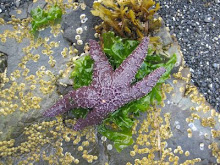
In 1994, while captaining a 140 foot Norwegian Whaler in Truk Lagoon that had been converted into a live-aboard dive boat, I had the opportunity to scuba dive on a Japanese submarine wreck called the I-169. The I-169 is a popular wreck to dive on in Truk, not so much for the wreck itself, but for the story behind its sinking.
Truk Lagoon is an atoll in the mid-pacific about 633 miles southeast of Guam and was a large Japanese naval base during World War II where the US Armed Forces sunk 40 Japanese vessels from the air on February 17th, 1944.
On April 2nd, 1944 the crew of the I-169 received a warning of an impending B-24 raid. They dove down to sit on the bottom to wait out the raid. The submarine failed to return to the surface so a diver was sent down to find out what had happened. According to Dan Bailey, who wrote the book, WORLD WAR TWO WRECKS of the KWAJALEIN and TRUK LAGOONS, the following is what the diver found.
The upper valve of the storm ventilation tube in the upper part of the conning tower was open a couple of inches. The valve had either been opened by mistake or someone had forgotten to close it during submergence and the diver found the control room to be completely flooded.
Because the conning tower was flooded, there was no way for those inside to escape. Also, the valves to make the sub ascend were in the flooded control room.
The diver did hear tapping and the rescue team tried to lift the sub up from the bottom, but the crane collapsed and because they were under constant attack rescue efforts were hampered. The subs compliment was 70 but there were 100 bodies recovered once the rescue team was able to enter. Investigators presume that some 30 shore laborers that were loading supplies onto the sub at the time of the warning decided to stay on board.
Someone made a costly mistake. Evidently, the Captain was on shore doing business when the warning came and was saved from the sub's terrible end.
The sub lays in waters 130 to 150 feet deep so dive time is short. As I dove along the eerie, rusting hulk; the sad end to so many lives for such a silly mistake seemed unfair.
After the bodies had been taken ashore, the Japanese depth charged the I-169 so that the sub would not come into enemy hands. Tangled lifting cables and jagged, sharp metal stood out against the sleek lines of what remained of the sub after so many years.
There is a good lesson to learn from the I-169: Small insignificant actions that seem inconsequential, can have huge repercussions.
Here is an artists drawing of what the I-169 looks like today after years of rusting and corrosion on the sea-floor.
Here is an artists drawing of what the I-169 looks like today after years of rusting and corrosion on the sea-floor.
Here is a nautical poem about that subject that I wrote for the youth while serving in the bishopric in Sitka, Alaska.
Just One Degree
By J. Brad Chapman
Here's a little scenario I'd like to offer you,
In it, your the Captain of a ship, you're brave and true.
And you'll be in command of the course and of the crew,
But first, let me share a navigational point with you.
If on your voyage you set the course, but were off just one degree,
Would you reach the port of call across the deep blue sea?
Or would you find a lonely place on some far, distant shore,
And realize a small mistake was at your problems core.
Just one degree in three-sixty, doesn't seem an awful lot,
Unless you want to end your voyage at some prearranged spot.
You see, my friend, just one degree when crossing oceans wide,
Could make you a poor lost soul, or a triumphant guide.
And yes, there is a price we pay when we are not precise.
It makes our chance of life's success like the rolling of the dice.
And sloppiness in thought and deed might not seem so awfully wrong,
Unless you want to end life's voyage spiritually sound and strong.
In the Book of Alma, fifty seven, twenty-one,
We read about Helaman and two thousand of his sons.
Now they survived the battle 'cause of what their mothers taught;
They didn't doubt and they obeyed the orders that they got.
And when the conflict ended all two thousand were alive.
They followed with exactness, not one single warrior died.
You see, my friend, just one degree, when crossing oceans wide,
Could make you a poor lost soul, or a triumphant guide.
So here, friend, take the wheel, set the course, it's up to you,
But realize, before you start, what one degree can do.
Will you, with exactness, be obedient and true,
And steer the straight and narrow course, until your voyage is through?
October 5, 1998
This is a photo of me the day that I dove the I-169 on October 15, 1994.
Our Trukese divemaster is next to me on the front row.
Those on the back row are recreational divers from the states.
This is a photo of the S/S Thorfin in Truk Lagoon.
It is a 140 foot Norwegian Whaler that was converted into a live-aboard dive boat.



























